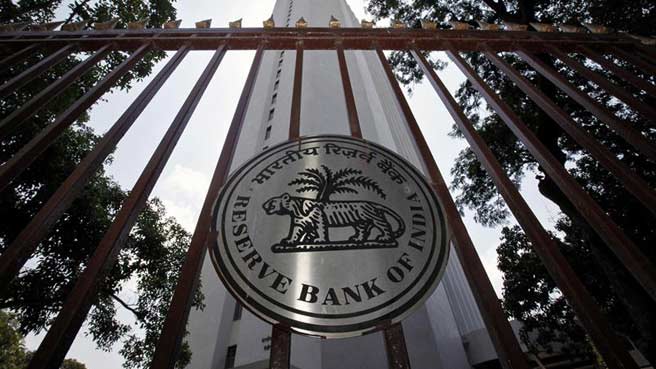India’s banking sector is facing a double-edged challenge. A worsening deposit crunch, coupled with a rise in credit card delinquencies, is making banks more cautious about expanding their customer base, even as the festive season—typically a time of heightened economic activity—rolls around.
Data from the Reserve Bank of India (RBI) reflects this growing strain, a slowdown in the pace of new credit card additions from 920,000 in August to 620,000 in September, a drop of nearly one-third. This trend marks a 64% decline in new credit card issuances year-over-year, bringing the total active cards in India to 106 million.
The key players in the credit card market are feeling the pinch. HDFC Bank, the country’s largest credit card issuer, added only 430,000 cards in September, followed by SBI Cards at 140,000 and Axis Bank at 53,000. Meanwhile, ICICI Bank saw negligible growth, with only 4,000 new cards issued. As banks grow wary of the risks in the unsecured credit segment, this slowdown is likely to persist.
Rising Credit Card Defaults in the Middle-Class Segment
The issue of mounting credit card defaults is particularly pronounced among middle-income earners. Macquarie Capital reports that default rates in the credit card portfolio of banks have reached nearly 6%, a level that has not been seen in recent years.
According to Suresh Ganapathy, head of financial services research at Macquarie Capital, the middle-income demographic is particularly vulnerable, especially as avenues like personal loans—which many used to cover credit card dues—are now less accessible following recent RBI regulations. “There is an issue with the middle class, and the urban slowdown is for real,” he noted, underscoring how this economic segment is bearing the brunt of a challenging financial climate.
Data from the RBI also shows a decline in transaction volume growth, slowing to 0.5% in September from 1.6% in August. Despite this slowdown, total credit card spending rose in September to ₹1.77 lakh crore from ₹1.69 lakh crore in August, buoyed by festive spending.
However, this increased expenditure comes at a cost.
Credit card spending grew by 4.7% month-over-month and an impressive 23.8% year-over-year, driven largely by younger millennials who are maxing out their credit limits without the intention—or ability—to revolve their balances. This pattern has turned many of these accounts into non-performing assets, prompting concern from the RBI, which has flagged significant risks in the unsecured segment and urged lenders to exercise caution when extending personal loans for consumption.
)
The Deposit Crunch Worsens
Compounding the challenges for banks is a tightening deposit base. As banks struggle to attract deposits, both the RBI and India’s policymakers are becoming increasingly alarmed.
The central bank is reining in money growth to curb inflation, but this has inadvertently created additional obstacles for credit and investment growth. The government’s taxation policies are exacerbating the problem by taxing savers heavily and diverting the proceeds away from the financial system, leaving banks in an even tighter spot.
Adding to this strain is the reluctance of banks to raise interest rates on deposits, further dissuading savers from parking their money in banks. This cautious approach, while aimed at protecting profit margins, risks undermining the stability of the banking system if the deposit base does not see significant growth.
Technology, Greed, and the Deposit Crunch
India’s banking sector faces a complex set of challenges in maintaining liquidity, with the Reserve Bank of India (RBI) warning that some banks may be skirting “structural liquidity issues.”
Two main factors are adding to this strain: the impact of technology on customer behavior and a surge in retail interest in the stock market, which is drawing funds away from traditional banking.
The RBI has observed that technology, particularly the widespread use of smartphones, is influencing the pace at which deposits are withdrawn. With mobile banking and internet access, customers can easily transfer funds, making banks more vulnerable to rapid withdrawals.
To address this, the RBI has recommended that banks consider any customer account linked to a smartphone as at risk of quicker deposit erosion. Additionally, starting next year, banks will be required to hold more safe assets, such as cash and government securities, to counterbalance the risk of runoff from internet-enabled accounts. This change could slow the availability of credit across the banking system, but it’s seen as necessary for maintaining stability.
To meet their liquidity requirements, some banks have had to take drastic steps.
HDFC Bank Ltd., India’s largest private bank, plans to sell 100 billion rupees ($1.2 billion) in advances to bring its loans-to-deposit ratio, which has exceeded 100% for four consecutive quarters, back into alignment.
Greed and the Shifting Financial Angle
Beyond technology, RBI Governor Shaktikanta Das has pointed out that “greed” is also fueling the current liquidity squeeze. Over the past two years, credit growth has outpaced deposit growth, with households increasingly investing their money in the stock market and other financial avenues instead of parking it in banks. This trend has been encouraged by the allure of potentially higher returns from capital markets and alternative financial intermediaries.
However, while this shift has affected the composition of deposits, it doesn’t mean funds are permanently leaving the banking system. When investors purchase securities, the funds might move from one bank account to another, but they remain within the banking system. Money only truly exits the system when withdrawn as cash, and cash use in transactions has been on the decline. Loans, in fact, have a way of creating deposits: when a bank issues a mortgage, for instance, the payment eventually credits the seller’s account, keeping funds circulating within the system.
Taxation and Government Funds
A more pressing issue, however, lies in the amount of money being directed to the government through taxes. These funds accumulate in government accounts with the RBI rather than with commercial banks, reducing the liquidity available to lenders.
Hence, State-run banks are now lobbying the government to keep its cash balances with them rather than with the central bank, which could alleviate some of the strain on deposits and bolster the funds available to the broader banking system.

RBI’s Monetary Policy and the Deposit Shortage
The RBI’s own policies may also be inadvertently contributing to the deposit crunch. The growth of the RBI’s total liabilities — including currency in circulation and bank reserves — has slowed, expanding 2.3 percentage points slower than the 9.7% nominal GDP growth recorded in the June quarter.
This shift is unusual, as central bank liabilities, known as “high-powered money,” typically expand ahead of GDP growth, fueling credit and liquidity across the economy. The recent contraction to under 4% growth in the RBI’s monetary base marks a significant departure from this norm, restricting money creation and further tightening liquidity in the banking sector.
Historically, the only recent instances of the RBI slowing its money supply relative to GDP growth occurred during the 2013 “taper tantrum” and following the 2016 demonetization, when 86% of currency in circulation was suddenly invalidated. This current policy, aimed at controlling inflation, is another notable exception and suggests that the central bank is prioritizing price stability over liquidity at the risk of creating a shortfall in deposits.
Drawing Lessons from China’s Economic Playbook
China’s approach to managing its monetary base has historically been a deliberate economic strategy rather than a flaw. Following China’s 2001 entry into the World Trade Organization, the country witnessed a boom in investment. Ordinarily, such rapid growth would lead to a current account deficit, where domestic investment outpaces local savings.
Yet, China continued to achieve rising surpluses.
In a 2007 study, Michael Mussa, former chief economist at the International Monetary Fund, pointed to the balance sheet of the People’s Bank of China (PBOC) as the key to this phenomenon. Central banks in developed countries typically buy government securities to introduce new money, which, if left unchecked, can create inflation, leading to higher interest rates.
China, however, wanted to sustain a booming economy with an undervalued currency to maintain its export competitiveness. Instead of buying bonds, the PBOC bought incoming dollars. This practice injected yuan into the banking system, which the PBOC then partially reabsorbed to keep liquidity in check.
By restricting the monetary base, particularly between 2004 and 2006, the PBOC controlled household purchasing power, curtailing consumer spending despite rapid economic growth. This effectively forced households to save more at low, state-set interest rates. The outcome was a rise in national savings, allowing China to fund its own investment demands without excessive foreign borrowing.
Could India Follow a Similar Path?
India’s current economic trajectory under Prime Minister Narendra Modi hints at a similar ambition to pursue investment-led growth. Household consumption, once as high as 80% of GDP in India half a century ago, has now dropped to about 60%. Meanwhile, the investment rate has reached around 31% of GDP.
China, however, achieved a peak investment rate of 45% of GDP in 2013, while India’s highest investment-to-GDP ratio was 36%, seen before the 2008 Global Financial Crisis. Achieving or even approaching this level again would mark significant progress for India. The post-crisis recovery, however, was short-lived, ending in 2013 when domestic savings proved insufficient and foreign investors grew cautious about India’s widening current-account deficits.
Since then, India’s current account has shown more stability, and Indian banks are in a stronger capital position compared to a decade ago. However, a new challenge has emerged in the form of a deposit shortage that could ultimately hinder credit-driven investment. Without innovative policy solutions to maintain bank liquidity while controlling the money supply, this deposit shortfall may set limits on India’s investment ambitions.
Snapshot
The Vicious Cycle Of Inflation, Stagnant Incomes, and Economic Pressures
India’s banking sector is caught in a vicious cycle of inflation, rising expenditures, and stagnant incomes.
Middle-income earners—already facing escalating costs and limited income growth—find themselves increasingly reliant on credit to sustain their lifestyles. Yet, as banks grow cautious and credit conditions tighten, many are left with dwindling options, setting off a chain reaction of defaults and weakened spending power.
As policymakers and banks work to counter these headwinds, the path forward will require balancing regulatory oversight with targeted measures to stimulate growth. In particular, addressing the root causes of the deposit crunch and easing the strain on the middle class will be essential to breaking this cycle and restoring confidence in the banking sector.
For now, however, the industry remains on alert as it struggles with these mounting pressures, recognizing that a long-term solution will be necessary to stabilize the financial aspect for India’s middle class.









